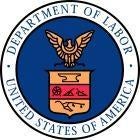President Obama has laid out a vision that asks us to make our country a magnet for jobs; to equip Americans with the skills to succeed in those jobs; and to ensure that a hard day’s work leads to a decent living.
At the Labor Department, we are committed to making sure that people with disabilities are included in that vision. On Monday, we announced a fourth round of funding for the Disability Employment Initiative, a successful program that is expanding the capacity of the public workforce system to help people with disabilities find good jobs.
Last month, previous DEI grantees came to the Labor Department to share about this program’s impressive return on investment. Among the DEI pilot sites, the percentage of people with disabilities who have found jobs is up to 40 percent higher compared with non-DEI sites.
In this round, we will be awarding four to eight new cooperative agreements − worth a total of nearly $18 million − to state workforce agencies, which in turn will collaborate with local workforce investment boards. Partnerships are the key to DEI’s success. By integrating with vocational rehabilitation, Medicaid, Social Security, transportation and other programs, DEI grantees are addressing the employment-related needs of people with disabilities holistically.
And while this initiative obviously focuses on people with disabilities, our research on workforce strategies concludes that many, if not most, practices promoted through DEI are actuallyuniversal strategies that can benefit people with other complex barriers to employment like poverty, limited language proficiency and low levels of education.
In just a few short years, DEI is already making a powerful difference in the lives of workers with disabilities. But the truth is that we have much work ahead. The March unemployment rate for people with disabilities is 13.0 percent, more than two points better than a year ago but still daunting. Look at this way: if you’re a person with disabilities, you’re living through a recession more devastating even than anything the nation as a whole experienced in 2008 and 2009.
Then there’s this eye-popping statistic: only 20.7 percent of people with disabilities are participating in the labor force at all. Plus, a new report just issued today by the department’s Bureau of Labor Statistics shows that half of all people with a disability report some type of barrier to employment, whether it’s disability itself, a lack of education or training, transportation problems or the need for special features on the job.
These numbers show a shocking waste of human capital and should be a blaring wake-up call for us to do more. There are millions of people with disabilities out there who can work and want towork. They don’t want to spend their lives on public assistance; they’re that rare group of Americans who want to pay more taxes. They simply want to wake up every morning and head to a job that provides a sense of independence, dignity and purpose, to say nothing of a paycheck at the end of the week. They’re tired of living in the shadows; they want to live in the economic mainstream.
To build a strong economy that grows from the middle class out, we must provide ladders of opportunity for and capitalize on the talents of all people. That’s the philosophy behind DEI. It is about inclusion, civil rights and fundamental fairness; but it is also a smart economic growth strategy for the 21st century.
Jane Oats and Katherine Martinez contributed to this article.


 />i
/>i

